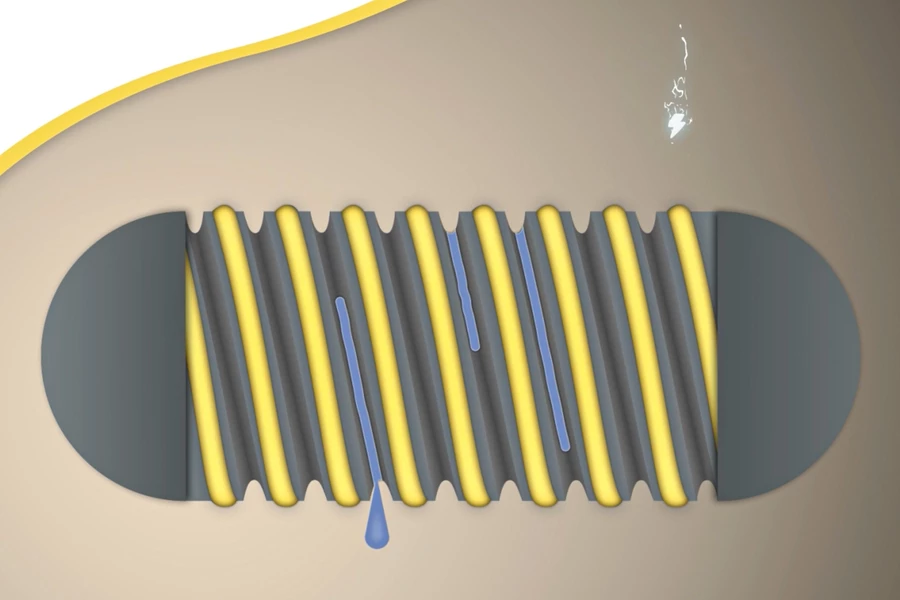Even though a variety of conditions may cause people to lose their appetite, it's important for those folks to keep eating in order to recover. A new "electroceutical" ingestible capsule could help, by making them feel hungry … and it was inspired by a lizard's skin.
Ordinarily, when our stomach is empty, the endocrine cells within its mucus-membrane lining produce a hormone known as ghrelin. The release of that hormone triggers our enteric nervous system's hunger response, prompting us to eat. Unfortunately, some disorders reduce the activity of those cells, causing people to not have much of an appetite.
Previously, scientists had looked into using a pacemaker-like device to stimulate the endocrine cells, artificially causing them to secrete ghrelin. Needless to say, though, surgically implanting such a gadget would be quite an invasive procedure. The use of externally applied electrodes has also been investigated, but delivering the current directly to the stomach lining proved to be difficult.
With these limitations in mind, a team of scientists from MIT, New York University and Brigham and Women’s Hospital looked to the Australian thorny devil lizard. More specifically, they looked to its skin – it has a surface texture that draws water droplets which settle on the skin toward the animal's mouth.
The result of the research is an ingestible device known as the FLASH, which stands for "FLuid-wicking capsule for Active Stimulation and Hormone modulation."

While the inside of the capsule contains a battery and electronic components, its polymer outer shell incorporates corkscrew-like grooves which run almost the whole length of the device.
When one side of the capsule comes into contact with the stomach lining, a hydrophilic (water-attracting) coating on the lower surface of the grooves wicks fluid away from the membrane, allowing electrodes on the higher ridges of the grooves to make full contact with the tissue. Those electrodes then deliver an electrical current to the membrane, stimulating the endocrine cells to produce ghrelin.
In tests performed on pigs, the FLASH was found to take effect within 20 minutes of ingestion, and trigger "a substantial spike" in ghrelin secretion for about one hour. The capsule was eventually – and harmlessly – passed with the feces. No adverse side effects were observed.

"This study helps establish electrical stimulation by ingestible electroceuticals as a mode of triggering hormone release via the GI tract," said the study's senior author Assoc. Prof. Giovanni Traverso, who is affiliated with both MIT and Brigham and Women’s Hospital. "We show one example of how we're able to engage with the stomach mucosa and release hormones, and we anticipate that this could be used in other sites in the GI tract that we haven’t explored here."
The scientists believe that clinical trials on humans could begin within three years. It is hoped that the FLASH technology could ultimately take the place of appetite-stimulating drugs, which can have unwanted side effects.
A paper on the research was recently published in the journal Science Robotics. The means by which the capsule works is illustrated in the following video.
Sources: MIT, New York University via EurekAlert, Brigham and Women’s Hospital via EurekAlert




